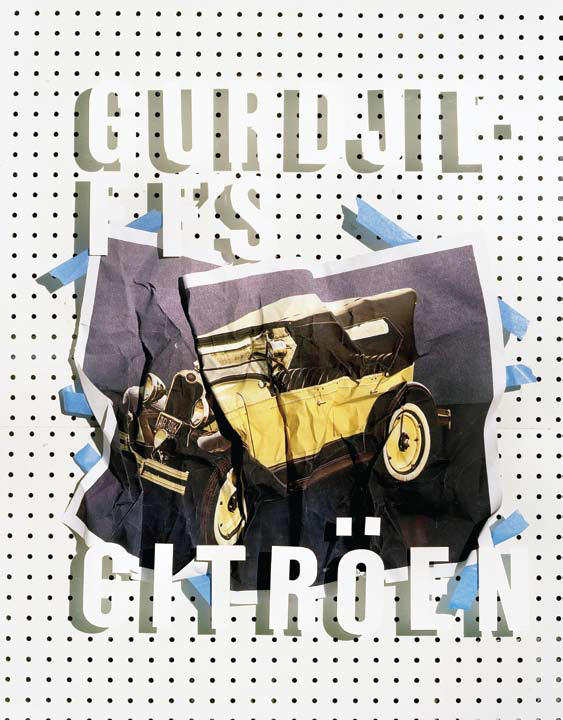
You are doubtless aware that Bob Dylan faked his motorcycle crash — or rather, that it was faked on his behalf by the shadowy elders who inhaled him, Rapture-style, into their flying saucer, leaving his bike to wobble riderless into the verge of an empty Woodstock road. Once aboard, as we now know, Dylan was detoxed, deprogrammed, demystified, swept head to toe by otherworldly lights, and then deposited with (naturally) no memory of the event outside the office of Dr Ed Thaler of Middletown, New York, who gave him a neck brace and a pat on the head. In the weeks that followed, Dylan grew irreversibly quaint and rural, knotty as an old tree. His rate of production dropped off, and his friends realized slowly that he would never again be capable of lines like “As the crow flies, I got second prize / But the spies in your eyes have deodorized my french fries.”
Did Georges Ivanovitch Gurdjieff, Greco-Armenian mystic, guru, carpet salesman, and dance teacher, fake his crash, too? Not likely — it almost finished the old rogue off. The year was 1924, and Gurdjieff’s commune/psychic-rehab facility at the Chateau du Prieuré in Fontainebleu, France, had been operating at full steam for over a year, its ample grounds peopled by poets whom Gurdjieff had sentenced to dig holes and professors who had rediscovered themselves as dishwashers and feeders of pigs. This was the Institute for the Harmonious Development of Man, the place of the Fourth Way, Gurdjieff’s pragmatic but unpredictable assault on illusion, automatism, and the spiritual sleep of modern man. The blistered neurotics in the tomato patch were his shock troops, as were the home-schooled dancers with whom he had just returned from a slightly apocryphal “tour” of the US.
Gurdjieff’s driving was very bad indeed, and very dangerous. As one observer noted, he operated his automobile like he was riding a horse. Delivered to the Prieuré in May 1923, his Citroën was both an imperial pleasure and the instrument of his private vengeance against mechanization. “He drove like a wild man,” wrote Kathryn Hulme in her memoir Undiscovered Country, “cutting in and out of traffic without hand signals or even space to accommodate his car in the lanes he suddenly switched to.” One accident had already been mysteriously survived, in the course of which Gurdjieff’s memory deserted him. He woke up twelve hours later, still at the wheel, in the middle of a forest, where “a big wagon loaded with hay had stopped in front of the car and the driver was standing at my window tapping on it with his whip.”
The next time was not so dreamy. Gurdjieff’s second motoring accident was nearly the end of him. But even after he had been brought home from the hospital, unconscious and displaying all the marks of a man who has just driven his car into a tree at ninety miles an hour, certain of his disciples were fully convinced that this was all another of Mr Gurdjieff’s “tests” — a trial of their credulity, or discipline, or readiness, or something. Among those unprepared to believe that he’d done it on purpose, there were whisperings of sabotage. Why had Gurdjieff insisted, just before motoring out to disaster on the route nationale, that the steering, lights, and brakes of his car be checked and rechecked? Did he suspect something? In any case, the crash would have philosophical consequences. Years later an ex-disciple called Mouravieff wrote a book in which the 1924 smash-up was adduced as proof that the master was “not outside the Law of Accident.”
Convalescing, tottering about the Prieuré in his dressing gown, Gurdjieff was filled with a need for fire. He smoked cigarettes as if committed to some state of internal combustion, and great choppings-down and burnings of Prieuré vegetation were ordered — a bonfire every day. “Fire evidently pleased Mr Gurdjieff,” wrote his acolyte Thomas de Hartmann. “We thought he drew a kind of force from it, and we tried to provide him with as many as possible. But the felling of the trees was a difficult matter.” As Gurdjieff’s interest in driving returned, de Hartmann’s wife, Olga, tried to shield Gurdjieff from its inevitable consequences by snipping the accelerator wire in the Prieuré’s backup Citroën. No good — this metaphysical speed-racer was soon on the road again, and at the usual perilous velocity. “The Work” continued, too, the great and strenuous perplex that “could only become more difficult as one learned more,” he warned his disciples. “As one grew one did not achieve any greater peace or any visible or tangible reward.” Gurdjieff carried on, indeflectably. But he never made another record as good as Blonde on Blonde.